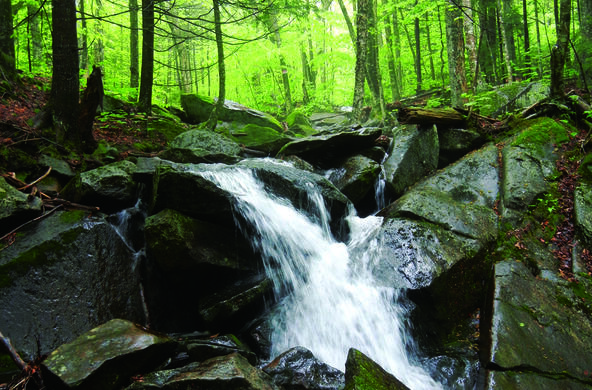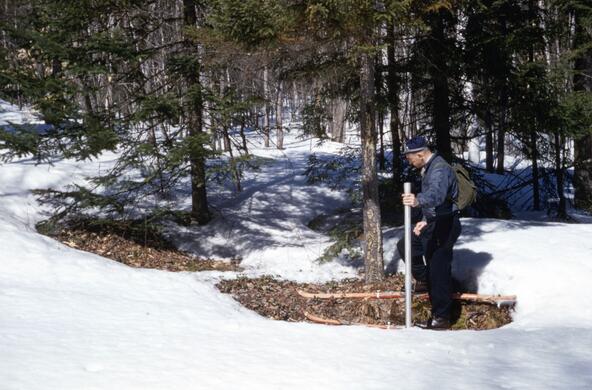The Hubbard Brook Ecosystem Study is a unique public-private partnership involving the USDA Forest Service, Cary Institute of Ecosystem Studies, the Hubbard Brook Research Foundation, and scientists from scores of research institutions throughout the country.
At the 8,300-acre Hubbard Brook Experimental Forest in New Hampshire, long-term studies of air, water, soils, plants, and animals have produced major discoveries about human and natural disturbances to the forested landscape of the northeastern United States.
In a collaborative research project spanning nearly six decades, scientists have discovered the existence and origins of acid rain; unlocked the mysteries of lead, salt, and nitrogen pollution in streams and lakes; and charted the rise and fall of bird populations because of climate change and other threats. Research findings at Hubbard Brook provide the raw material for education and policy-outreach programs that deliver authentic data to students, policymakers, and members of the public who care deeply about our natural world.
Hubbard Brook is much more than an ecological field station in New Hampshire—it represents a new paradigm of “ecosystem thinking” that has changed the way we understand how nature works.
Cary Institute of Ecosystem Studies has long been an integral part of the research at Hubbard Brook. Cary Institute President Emeritus Gene Likens co-founded the Hubbard Brook Ecosystem Study and started many of its crucial monitoring programs in the 1960s. Cary Institute senior research fellow Peter Groffman is the principal investigator of the National Science Foundation’s Long Term Ecological Research (LTER) Program grant that provides basic support for long-term studies at the site. Cary Institute aquatic ecologist Christopher Solomon studies streams at Hubbard Brook, and other Cary Institute scientists have done important research on forests, streams and lakes as part of the Hubbard Brook Ecosystem Study.
- Achievements
During the past five decades, the HBES has been highly productive and greatly expanded in scope. Six major scientific findings are especially noteworthy.
Discovery of acid rain in North America of the HBES and its impact on aquatic and terrestrial ecosystems.
Validation of the small watershed-ecosystem approach as a powerful scientific tool in tackling problems at the landscape-scale of complexity (ecological, hydrological, biogeochemical).
Confirmation that clearcutting and other major forest disturbances cause severe disruptions in the vital nitrogen cycle of terrestrial ecosystems.
Major depletion of base cations, primarily calcium, from soil pools by acid rain.
Dramatic decreases in chemistry of precipitation and stream water to extremely low concentrations.
That food limitation, climate, and forest structure account for most dramatic changes in the abundances of neotropical migrant birds.
More than 1,500 scientific publications, 12 books, and 8 monographs have been published. Hundreds of graduate, undergraduate, postdoctoral associates, and technicians have been mentored and trained at Hubbard Brook, resulting in more than 100 Ph.D. and 68 Master’s theses. Some 40-50 investigators from 20 or more institutions currently do research at the Hubbard Brook Experimental Forest. The initial paper describing the conceptual approach and major objectives of the HBES was published in Science [Bowman and Likens, 1967].
Now, faced with greatly increasing problems of human-accelerated environmental change, the Hubbard Brook approach to understanding ecosystem response to disturbances, is more valuable than ever.







